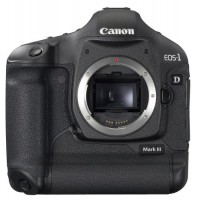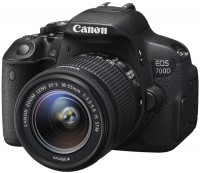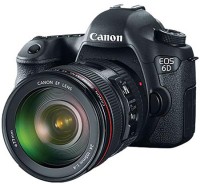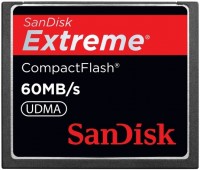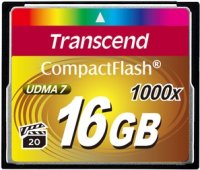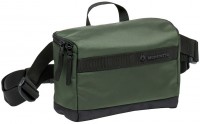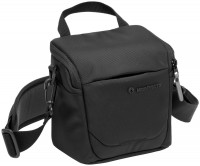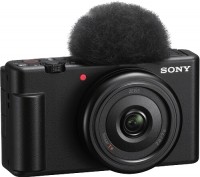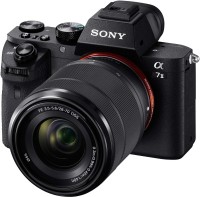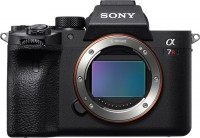Canon EOS 400D kit
 |
Canon EOS 400D kit
Panel:APS-C (23x15.5 mm), 10.5 MPix
Snapshot size:3888x2592 px
ISO range:100-1600
Burst shooting:3 fps
Screen:2.5 ''
All specifications
Specifications EOS 400D kit
|
| ||||||||||||||||||||||||||||||||||||||||||||||||||||||||||||||||||||||||||||||||||||||||||||||||||||||||||||||||||||||||||||||||||||||||||
The information in the model description is for reference purposes.
Always clarify the specifications and configuration of the product with the online store manager before purchasing.
Catalog Canon 2025 - new arrivals, bestsellers, and the most relevant models Canon.
Always clarify the specifications and configuration of the product with the online store manager before purchasing.
Catalog Canon 2025 - new arrivals, bestsellers, and the most relevant models Canon.
Buy Canon EOS 400D kit
All prices 8 →When you make a purchase through links on our site, we may receive a affiliate commission.
Canon EF 50mm f/1.4 USM Lens with Rear & Front Lens Cap & Holder for Canon EOS 550D 500D 450D 400D NL-C-50-1.4-12-2515A | $310.99 | ||||
Canon EF 50mm f/1.4 USM Lens with Rear, Front Lens Cap & Holders for Canon EOS 550D 500D 450D 400D NL-C-50-1.4-13-2515A | $312.99 | ||||
Canon EF 50mm f/1.4 USM Lens with 58mm UV CPL ND Ultimate Accessory Kit for Canon EOS 550D 500D 450D 400D NL-C-50-1.4-7-2515 | $326.99 | ||||
Canon EF 50mm f/1.4 USM Lens with UV CPL Filter Ultimate Accessory Kit for Canon EOS 550D 500D 450D 400D NL-C-50-1.4-2-2515A | $324.99 | ||||
Canon EF 50mm f/1.4 USM Lens with 58mm UV Filter and Cap Holder for Canon EOS 550D 500D 450D 400D NL-C-50-1.4-14-2515A | $315.99 | ||||
3 more offer(s)
Video reviews
From the manufacturer's press release:
"Canon has announced the launch of its next generation digital SLR camera, the EOS 400D. Equipped with a 10.1-megapixel CMOS sensor, new EOS (Integrated Cleaning System), larger and brighter 2, the new model is expected to With a 5" LCD screen and 9-point autofocus system, it will become the most popular camera in the world. In the lineup, the EOS 400D follows the EOS 350D, currently the most popular SLR camera.
Launched in 2003, the Canon EOS 300D, the world's first DSLR for the consumer market, revolutionized the digital world. "There is currently a significant increase in consumer interest in digital SLR cameras," said Mogens Jensen, head of Canon Consumer Imaging Europe.
Consumer research shows that it's not just analogue SLR owners who are turning to digital SLRs these days. “The strong growth in demand is due to the fact that, along with the 21 million users of analogue EOS cameras, there is now a new type of consumer of digital cameras in this series,” Jensen explained. “The home adoption rate has already exceeded 3% in Europe, so the question now is not whether this market will be big or not, but how big it will be.”
Canon is the only DSLR camera manufacturer to have proprietary image sensor, processor and lens technologies and manufacture these components in-house. “EOS cameras in the hands of photographers are the result of 20 years of investment in research and development of the EOS series,” said Jensen. “Photographers who choose the EOS series receive a photography system that has been thought through to the smallest detail to ensure they work perfectly as a balanced whole. No wonder more than 70% of the photographers registered for the Athens Olympics shot with EOS cameras.” The EOS series is the result of Canon's commitment to providing its customers with the most versatile camera on the market, with the flexibility to expand over 60 EF lenses and Speedlites.
Improved performance
Along with the built-in EOS cleaning system, the EOS 400D also features a number of technological innovations compared to its predecessor, the EOS 350D. An advanced, high-sensitivity, low-noise, high-speed CMOS sensor, now available on all six EOS DSLRs, has increased resolution from 8.0 to 10.1 megapixels. The brightest high-resolution 2.5-inch LCD screen in the EOS series, nearly twice the size of the EOS 350D, displays all key shooting information, user interface elements, and image review. The autofocus system has 9 points instead of 7; in addition, the highly sensitive f/2.8 centre focus point delivers exceptional low-light performance. Despite the higher resolution, the number of frames per burst has almost doubled (from 14 to 27 in JPEG and from 5 to 10 in RAW).
Dust removal
The EOS 400D is the first camera to feature the built-in EOS cleaning system. An analysis of the causes of dust in digital SLR cameras led to the creation of a system that fights dust in three ways, preventing dust, repelling and eliminating it.
Preventing Dust The internals of the camera are designed to reduce dust. The camera body is designed to prevent dust while wearing. Dust repellent The low-pass filter located in front of the image sensor is made with anti-static material to repel dust. Dust Removal The self-cleaning image sensor uses high-frequency vibrations to “shake off” dust from the low-pass filter for approximately one second each time it is turned on. To start shooting immediately after the power is turned on, this function is immediately disabled when the shutter is released.
Canon has also developed an internal Dust Delete Data system that detects the position of any visible dust particle on the image sensor. After shooting, traces of this dust can be automatically removed using the latest version of Digital Photo Professional software.
Benefits of the EOS series
The EOS 400D has a number of advanced features that were also used in higher-end models such as the EOS 30D and 5D. These include a 9-point autofocus system, Picture Style (see Technology Description section), folder storage for up to 9,999 images, and enhanced Pictbridge support.
The EOS 400D incorporates the same DIGIC II processor found in all EOS cameras up to the professional EOS 1 models (see Technology Description section). In addition to improved image quality through advanced processing algorithms and a fast turn-on time of 0.2 seconds, the high-speed DIGIC II processor allows the photographer to keep shooting by quickly clearing the memory buffer between bursts.
Ease of upgrade
The same easy-to-understand user interface and similar layout of key controls make it easy to upgrade to the EOS 400D from earlier EOS cameras. Photographers can also use the same battery and BG-E3 battery pack as the EOS 350D. In addition, the new camera supports all EF and EF-S series lenses, Speedlite EX flashes, and EOS camera accessories like its predecessors.
Software
Like all EOS DSLRs, the EOS 400D comes with a full range of software tools to assist the photographer with their images. This includes Digital Photo Professional (DPP), a powerful RAW file conversion tool that gives you complete control over the processing of your RAW images. This solution also integrates with camera features such as Dust Delete Data and Picture Style. The new camera is bundled with solutions such as EOS Capture, Image/Zoom Browser and Photostitch. In addition, the user receives 100 MB of space on the CANON iMAGE GATEWAY online portal, from where they can send the footage to friends, relatives or work colleagues.
"Canon has announced the launch of its next generation digital SLR camera, the EOS 400D. Equipped with a 10.1-megapixel CMOS sensor, new EOS (Integrated Cleaning System), larger and brighter 2, the new model is expected to With a 5" LCD screen and 9-point autofocus system, it will become the most popular camera in the world. In the lineup, the EOS 400D follows the EOS 350D, currently the most popular SLR camera.
Launched in 2003, the Canon EOS 300D, the world's first DSLR for the consumer market, revolutionized the digital world. "There is currently a significant increase in consumer interest in digital SLR cameras," said Mogens Jensen, head of Canon Consumer Imaging Europe.
Consumer research shows that it's not just analogue SLR owners who are turning to digital SLRs these days. “The strong growth in demand is due to the fact that, along with the 21 million users of analogue EOS cameras, there is now a new type of consumer of digital cameras in this series,” Jensen explained. “The home adoption rate has already exceeded 3% in Europe, so the question now is not whether this market will be big or not, but how big it will be.”
Canon is the only DSLR camera manufacturer to have proprietary image sensor, processor and lens technologies and manufacture these components in-house. “EOS cameras in the hands of photographers are the result of 20 years of investment in research and development of the EOS series,” said Jensen. “Photographers who choose the EOS series receive a photography system that has been thought through to the smallest detail to ensure they work perfectly as a balanced whole. No wonder more than 70% of the photographers registered for the Athens Olympics shot with EOS cameras.” The EOS series is the result of Canon's commitment to providing its customers with the most versatile camera on the market, with the flexibility to expand over 60 EF lenses and Speedlites.
Improved performance
Along with the built-in EOS cleaning system, the EOS 400D also features a number of technological innovations compared to its predecessor, the EOS 350D. An advanced, high-sensitivity, low-noise, high-speed CMOS sensor, now available on all six EOS DSLRs, has increased resolution from 8.0 to 10.1 megapixels. The brightest high-resolution 2.5-inch LCD screen in the EOS series, nearly twice the size of the EOS 350D, displays all key shooting information, user interface elements, and image review. The autofocus system has 9 points instead of 7; in addition, the highly sensitive f/2.8 centre focus point delivers exceptional low-light performance. Despite the higher resolution, the number of frames per burst has almost doubled (from 14 to 27 in JPEG and from 5 to 10 in RAW).
Dust removal
The EOS 400D is the first camera to feature the built-in EOS cleaning system. An analysis of the causes of dust in digital SLR cameras led to the creation of a system that fights dust in three ways, preventing dust, repelling and eliminating it.
Preventing Dust The internals of the camera are designed to reduce dust. The camera body is designed to prevent dust while wearing. Dust repellent The low-pass filter located in front of the image sensor is made with anti-static material to repel dust. Dust Removal The self-cleaning image sensor uses high-frequency vibrations to “shake off” dust from the low-pass filter for approximately one second each time it is turned on. To start shooting immediately after the power is turned on, this function is immediately disabled when the shutter is released.
Canon has also developed an internal Dust Delete Data system that detects the position of any visible dust particle on the image sensor. After shooting, traces of this dust can be automatically removed using the latest version of Digital Photo Professional software.
Benefits of the EOS series
The EOS 400D has a number of advanced features that were also used in higher-end models such as the EOS 30D and 5D. These include a 9-point autofocus system, Picture Style (see Technology Description section), folder storage for up to 9,999 images, and enhanced Pictbridge support.
The EOS 400D incorporates the same DIGIC II processor found in all EOS cameras up to the professional EOS 1 models (see Technology Description section). In addition to improved image quality through advanced processing algorithms and a fast turn-on time of 0.2 seconds, the high-speed DIGIC II processor allows the photographer to keep shooting by quickly clearing the memory buffer between bursts.
Ease of upgrade
The same easy-to-understand user interface and similar layout of key controls make it easy to upgrade to the EOS 400D from earlier EOS cameras. Photographers can also use the same battery and BG-E3 battery pack as the EOS 350D. In addition, the new camera supports all EF and EF-S series lenses, Speedlite EX flashes, and EOS camera accessories like its predecessors.
Software
Like all EOS DSLRs, the EOS 400D comes with a full range of software tools to assist the photographer with their images. This includes Digital Photo Professional (DPP), a powerful RAW file conversion tool that gives you complete control over the processing of your RAW images. This solution also integrates with camera features such as Dust Delete Data and Picture Style. The new camera is bundled with solutions such as EOS Capture, Image/Zoom Browser and Photostitch. In addition, the user receives 100 MB of space on the CANON iMAGE GATEWAY online portal, from where they can send the footage to friends, relatives or work colleagues.
We recommendCompare using chart →

















